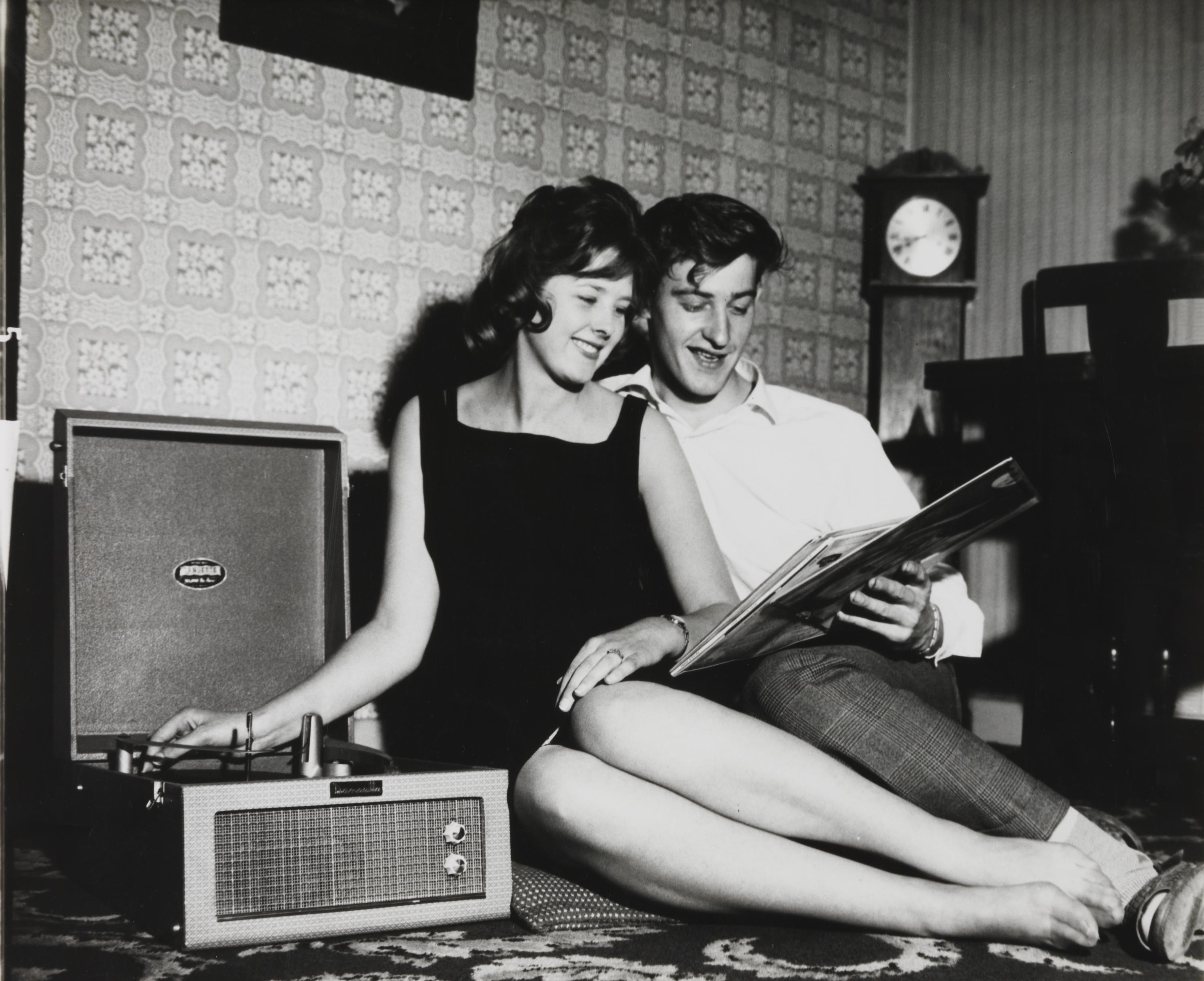‘Google, get my positivity playlist’, says the young woman in the advert, dismayed at the state of her hair. Using music for mood management might be easier than ever today and highly popular with the young, but there’s nothing new in the idea. When Orsino quips in Twelfth Night ‘If music be the food of love, play on’, he’s doing just the same: trying to manage his infatuation with Olivia by getting an ‘excess of it, that, surfeiting, the appetite may sicken, and so die’.
It reminds me of the way my old piano teacher – and she was very old, bless her – told me when I was learning Chopin’s ‘Funeral March’ (from his Piano Sonata No. 2) that her brother would play it when he was feeling down, looking for a kind of purgative surfeit of gloom.

How, though, does music exert this tug on our mood and emotions? Why can it make us feel like dancing? Why, when the schmaltzy strings kick in during that corny death scene (Beaches, I’m looking at you), are we utterly unable to hold back the tears? This is what I’ll be exploring with maestro jazz pianist Joe Stilgoe with the input of the IMAX audience at the Science Museum Lates on 25 July.
***
I suspect there’s a common perception that emotion in music is different from cognition of music. Cognition sounds cool and rational – Ah, what splendid use of counterpoint in this fugue! – while emotion is raw, coming from the gut rather than the mind and beyond analysis.
But that’s not right. Many psychologists and neuroscientists now argue that emotion isn’t separate from, and indeed in opposition to, rational thought, but is important for good decision-making. Emotion is simply a part of how we think and make sense of the world; without it, our thinking may be impaired. With music that is more clear than ever: much of the emotional impact stems from the stunning intuition we develop, even without any formal musical training, about the structure and patterns in what we hear.

Maybe, though, you are suspicious of claims that we can understand musical emotion because it seems so subjective. There is nothing like music for eliciting the dismissive comment ‘each to his own’ – most of us have had the experience of feeling indifferent about music that renders others ecstatic, and vice versa. We’re not even consistent in our own responses: how a piece of music makes us feel could vary depending on the circumstances in which we hear it.
Does this mean that musical emotion is doomed to remain forever too personal and mysterious, beyond the reach of systematic analysis?
Apparently not – because some aspects of musical emotion do seem universal. Western listeners turn out to be pretty good at judging whether happiness or sadness is intended in music from unfamiliar cultures, such as Kyrghistani, Hindustani and Navajo Native American, while people from a remote tribe in the Cameroon who had never heard Western music proved to agree with Western listeners more often than chance in assessing which extracts of Western music were happy, sad and fearful.
Where does this apparent universality in designators of musical mood come from? Think of Ann Ronell’s great 1932 song ‘Willow Weep for Me’, which has been sung by everyone from Billie Holiday to Ella Fitzgerald and Nina Simone. It’s a melancholy song, and for much the same reason that we say willows ‘weep’. Just as the trees look like a weeping person, with a slouched, drooping physiognomy, some broad characteristics of musical emotion seem to mimic in music the physicality of that emotion in people, particularly in speech and gesture.

When most listeners agree that music is sad, it is likely to be slow and soft – rather like the way sad people tend to move and speak. This doesn’t mean that all slow, soft music is sad, but that few people from just about any culture would find Handel’s Music for the Royal Fireworks sad. Similarly, music commonly designated ‘happy’ tends to be relatively fast-paced and jaunty, and at a moderately loud volume. These purely acoustic properties allow simple emotional messages to be easily discerned on the ‘surface’ of the music.
But while studies like this might offer hints about the crudest, most generalized components of the musical emotional palette, they don’t come close to telling us what it is about music that truly excites the passions.
A plausible theory of how that happens was developed in the 1950s by the musicologist Leonard Meyer. He proposed that we feel emotion in music when we have expectations about the way the music will go that are frustrated or violated, even if just fleetingly.
You might think that if music is constantly violating our expectations, we’d find listening irritating and unpleasant. But music is constantly meeting our expectations too: tonal music retains its sense of key, there are plenty of repetitions and rhythmic regularity and so on. The idea is that, if our expectations are momentarily foiled and then met, the payoff is greater than if gratification is instant. We experience tension and then release, which is far more satisfying than just bland predictability.

These violations of expectation seem to take a shortcut to the ’emotional brain’ without the intervention of the rational brain. That may well say something about the evolutionary origins of the effect: we are instinctive pattern-seekers, adapted through evolution to make predictions about our environment and to feel rewards when they are correct. Even when this prediction involves the course of a Mozart sonata rather than the identification of a dangerous animal, we can’t turn off this hardwired anticipatory instinct. And because it presumably had a survival function, we may not have been able to afford the time to sit back and logically reason whether an emotional response was really warranted – we had to react at once to what our instincts told us. So even though we ‘know’ what is coming, the emotional response still arrives. That’s why these tricks keep working over repeated listens – we don’t get bored by music we’ve heard before.
Meyer showed how music – not just Western classical music, but that of diverse cultures – is filled with little deviations from the obvious, violations of expectation that lend spice to a piece and engage our emotions. The skill of composing music that engages us then lies in getting the balance right: in allowing us to develop expectations, and then in providing just the right mixture of violation and gratification. If the music is too obvious, it bores us. If it is too chaotic or disjointed to allow us to develop any expectations at all, it merely baffles and frustrates us.

This principle of deviating from expectation for expressive purposes is found in non-Western traditions too. Blues and jazz musicians, meanwhile, often use it by making the pitch of certain notes ambiguous. That’s particularly common on the so-called blue notes, which are the third and the seventh notes of the Western scales. Because in jazz and blues these notes have an inherently imprecise pitch, they are the obvious and most common ones used for expressive purposes by bending the pitch. The importance of being able to manipulate the intonation in this way no doubt explains why the guitar, on which notes can be bent by pulling on the strings, has been so central to the blues. Likewise the saxophone to jazz, where pitch bending comes from breath control on the reed. It’s harder on the fixed pitches of the piano – with the help of the Science Museum IMAX audience, I want to see what Joe Stilgoe can do about that!
***
The most wonderful thing about music’s ability to evoke emotion is that it works for almost all of us, and we don’t even need to put any work in to acquire that receptiveness. We just have to listen for the sheer enjoyment of it. Our incredible, pattern-seeking brain does the rest, without our even noticing. Mastering musical composition or performance is hard work, and we’ve been encouraged to see it as a rare gift. But a capacity for musicality is not a rare gift at all. It’s something that we all possess to some degree or other. It’s a part of being human.
Join Joe Stilgoe and Philip Ball at The Science of Music and Mood at this month’s Lates on Wednesday 25 July, set to be an inspirational evening of music, improvisation, science and audience participation. Book now.
2 comments on “What science says about the mood of music”
Comments are closed.

My car broke down on the way to seeing this at the IMAX.
Will this be shown again at any point?
Hi Kish, really sorry you couldn’t make it to the event. This was a one-off event, but you can listen to the full recording here: https://soundcloud.com/sciencemuseum/joe-stilgoe-and-philip-ball-on-the-science-of-music